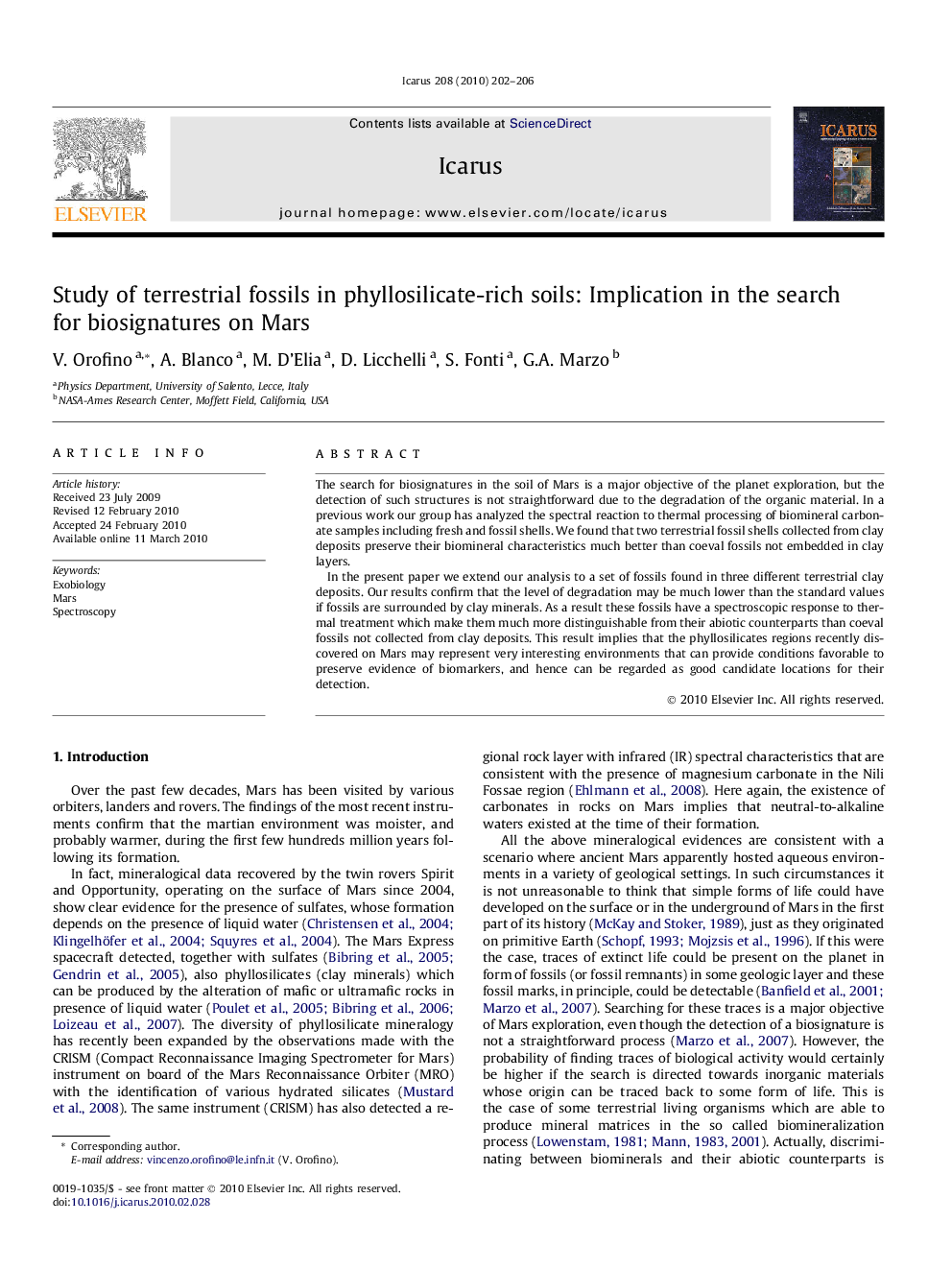| Article ID | Journal | Published Year | Pages | File Type |
|---|---|---|---|---|
| 1774674 | Icarus | 2010 | 5 Pages |
The search for biosignatures in the soil of Mars is a major objective of the planet exploration, but the detection of such structures is not straightforward due to the degradation of the organic material. In a previous work our group has analyzed the spectral reaction to thermal processing of biomineral carbonate samples including fresh and fossil shells. We found that two terrestrial fossil shells collected from clay deposits preserve their biomineral characteristics much better than coeval fossils not embedded in clay layers.In the present paper we extend our analysis to a set of fossils found in three different terrestrial clay deposits. Our results confirm that the level of degradation may be much lower than the standard values if fossils are surrounded by clay minerals. As a result these fossils have a spectroscopic response to thermal treatment which make them much more distinguishable from their abiotic counterparts than coeval fossils not collected from clay deposits. This result implies that the phyllosilicates regions recently discovered on Mars may represent very interesting environments that can provide conditions favorable to preserve evidence of biomarkers, and hence can be regarded as good candidate locations for their detection.
